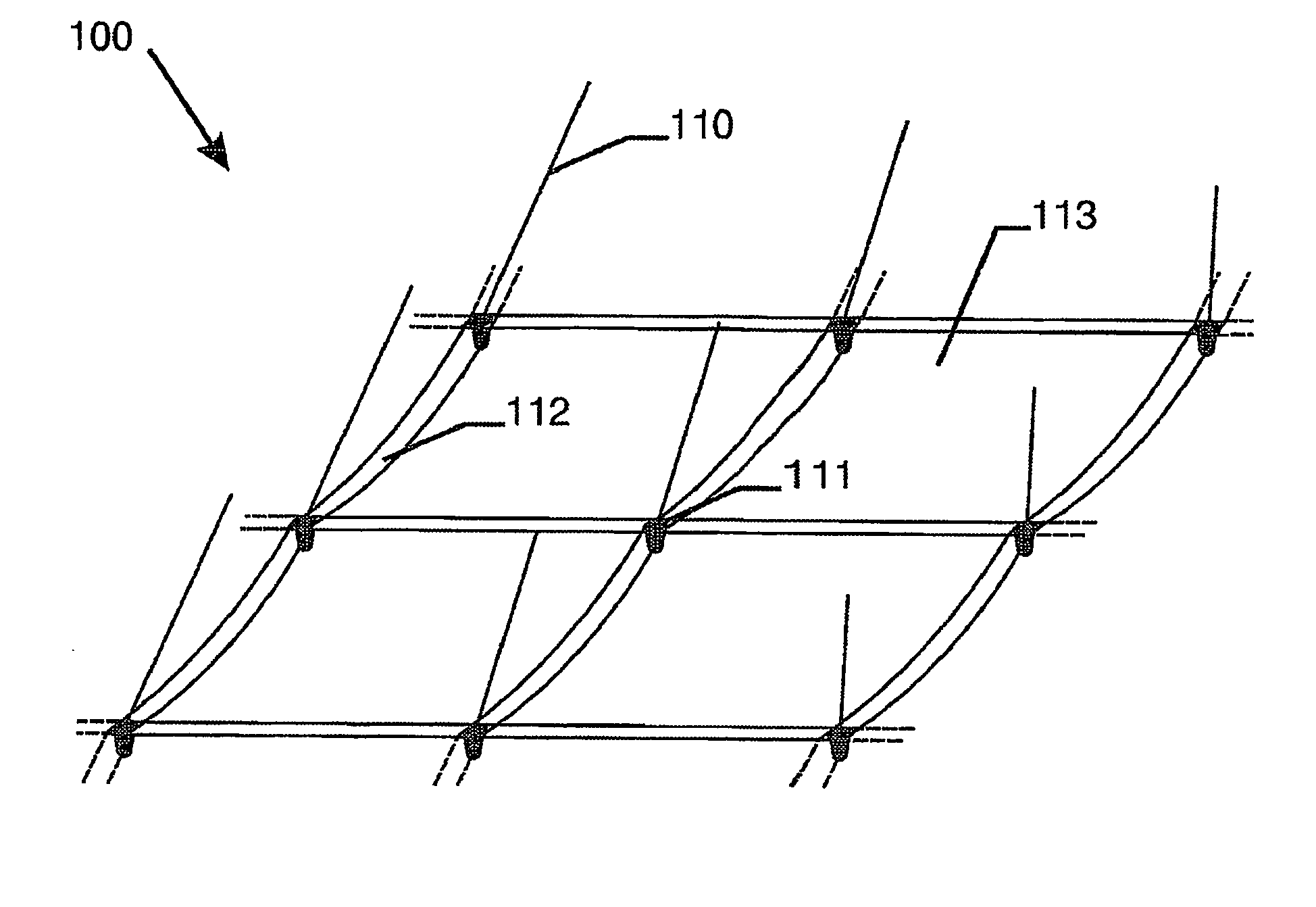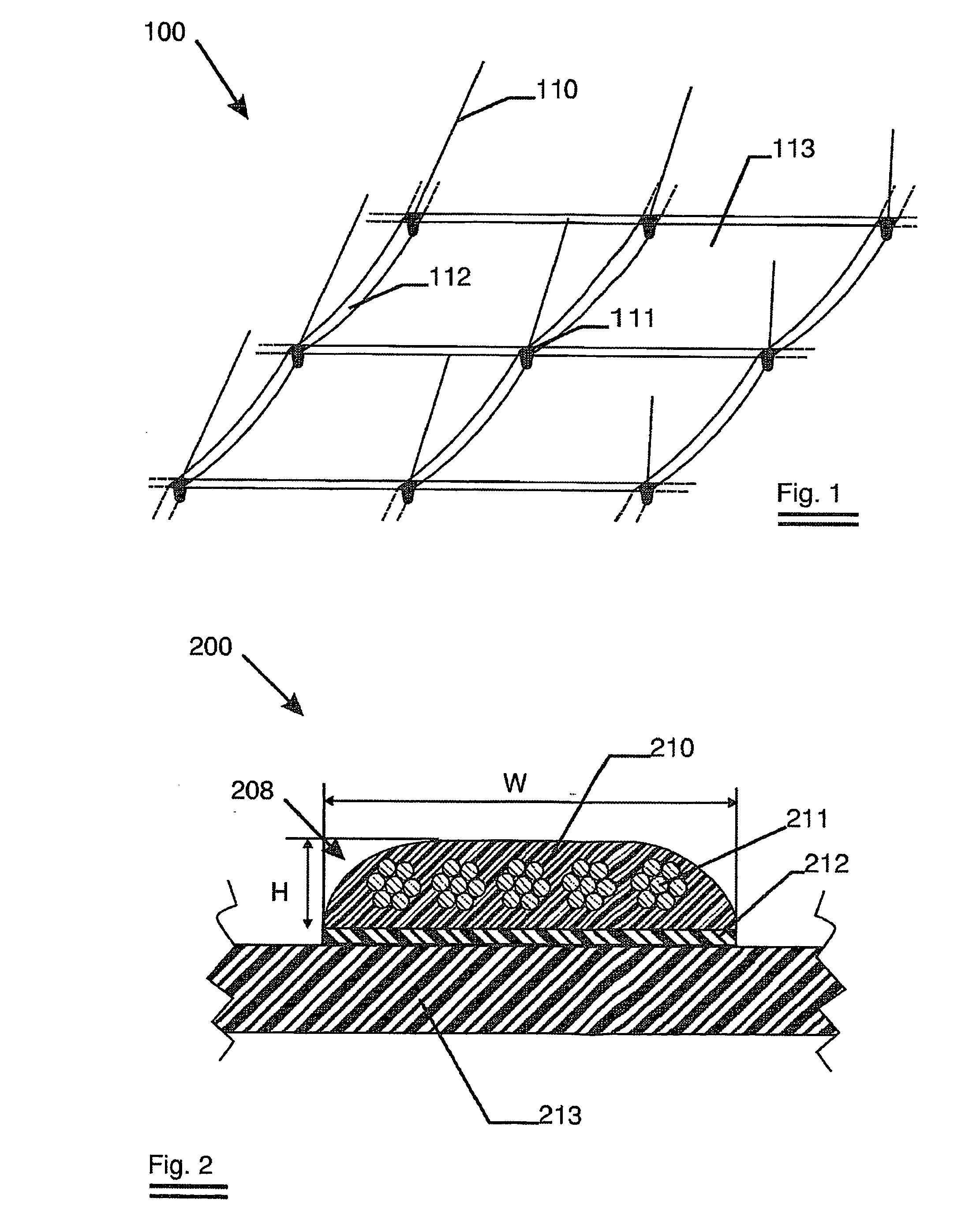Architectural fabric
a technology of architectural fabric and tensioning, applied in the field of architectural fabric, can solve the problems of reducing the lifetime of architectural fabric, steel cables tend to rub against the membrane, and the attachment is not easy to be easily attached to the membrane, and achieves the effect of not excessively stretching and being easy to apply
- Summary
- Abstract
- Description
- Claims
- Application Information
AI Technical Summary
Benefits of technology
Problems solved by technology
Method used
Image
Examples
Embodiment Construction
[0038]FIG. 1 shows an architectural fabric of the suspended type according the invention. The architectural fabric 100 comprising one membrane 113 and a tension member 112 is shown. At the crossing points the tension members are turnably attached to one another by means of connector 111.
[0039]FIG. 2 shows a cross section of an architectural fabric 200 according the invention with a single membrane 213. The tension member 208 comprises steel cords 211 embedded in a polymer matrix 210. As the height H is much less than half of the width W, the tension member thus forms a strip. A double-sided self-adhesive tape 212 is used to intimately connect the strip to the membrane.
[0040] Such a strip has been produced by means of extrusion and had the following properties:
TABLE 1Number of cords10Cord type and diameter7 × 19 / 3.2Coating typeHot dip galvanisedWidth × Height of strip38 mm × 5 mmMatrixPolyurethaneDesmopan 8603Breaking load of strip100 406 N(repeated measurement)103 171 NMass per ...
PUM
| Property | Measurement | Unit |
|---|---|---|
| tensile strength | aaaaa | aaaaa |
| tensile strength | aaaaa | aaaaa |
| tensile strength | aaaaa | aaaaa |
Abstract
Description
Claims
Application Information
 Login to View More
Login to View More - R&D
- Intellectual Property
- Life Sciences
- Materials
- Tech Scout
- Unparalleled Data Quality
- Higher Quality Content
- 60% Fewer Hallucinations
Browse by: Latest US Patents, China's latest patents, Technical Efficacy Thesaurus, Application Domain, Technology Topic, Popular Technical Reports.
© 2025 PatSnap. All rights reserved.Legal|Privacy policy|Modern Slavery Act Transparency Statement|Sitemap|About US| Contact US: help@patsnap.com



